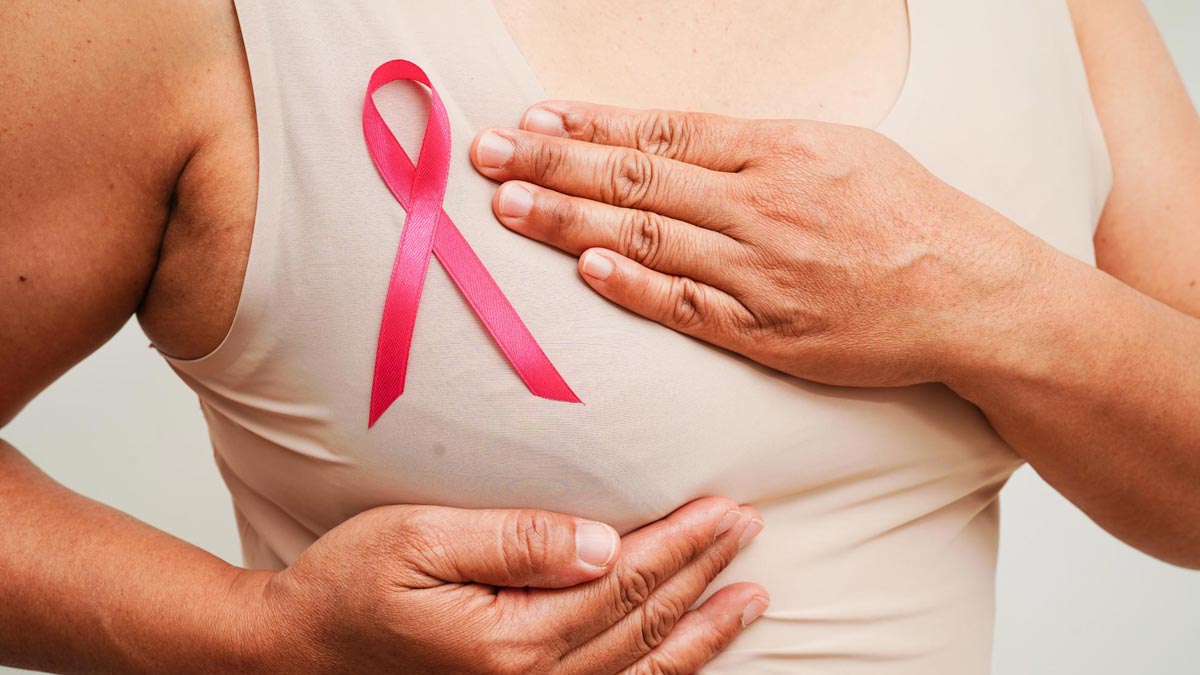
Breast cancer screening consists of checking the breasts for cancer before signs or symptoms of the disease appear. Breast cancer screening does not prevent breast cancer, but helps in early detection and cure. A mammogram is an X-ray picture of the breast used to detect early signs of breast cancer. Regular mammograms are the best tests doctors have to detect breast cancer early, sometimes up to three years before the lump can be actually felt.
Table of Content:-
We reached out to Dr. Mukul Roy, Consultant Clinical & Radiation Oncologist at Jaslok Hospital, Mumbai, to know when is the right time that a woman should get a mammogram done.
How is a mammogram done?
The patient stands in front of a special X-ray machine. The technologist places the breast on a plastic plate and another plate firmly presses the breast from above. The plates flatten the breast, holding it steady as the X-ray is taken. Many women find mammograms uncomfortable. Many times the breasts are more sensitive if the patient is about to get periods. So, there are a lot of factors that are taken into consideration when getting a mammogram.
What happens in case of an abnormal mammogram?

Abnormal mammograms don't always mean cancer. But additional mammograms, tests, or exams are needed most of the time to be sure. Usually follow-up tests are done to diagnose breast cancer or to rule out cancer. Many times dense breast tissue can make the detection of cancers difficult and a small tumour may be missed sometimes.
Who Is More Likely to Have Dense Breasts?
The density of the breasts may change over time. Generally, the following people are more likely to have dense breasts:
- Younger women
- Pregnant or breastfeeding women
- Women taking hormone replacement therapy
- Individuals with lower body weight
Also Read: 4 Myths and Facts about Self-Breast Examination for Breast Cancer
In case of dense breasts, the following are suggested:
- Breast ultrasound - This uses sound waves to visualise areas inside the breast.
- Breast magnetic resonance imaging (MRI) - A type of body scan that gives detailed pictures of areas inside the breast.
American Cancer Society guidelines for screening women at average risk for breast cancer –
(Average risks are those with no personal history of breast cancer or strong family history or genetic mutation like BRCA gene and no past history of chest radiotherapy before the age of 30)
Also Read: 5 Breast Cancer Myths Busted By Doctor

- Women between 40 and 44 may start screening with a mammogram every year.
- Women 45 to 54 should get mammograms every year.
- Women 55 and older can opt for mammograms in alternate years, or continue yearly mammograms. It should continue as long as in good health and life expectancy of at least 10 more years.
- Women at high risk must get a breast MRI and a mammogram yearly starting at age 30. These women comprise those with lifetime risk of breast cancer 20% to 25% or greater (according to risk assessment tools available depending on family history). You should get yearly tests done if you fall in any of the following categories:
- Women with BRCA1 or BRCA2 gene mutation detected on genetic testing.
- Women with first-degree relatives with positive BRCA1 or BRCA2 gene mutation.
- Those women who received radiation therapy to the chest between the ages of 10 and 30 years.
Individuals with Li-Fraumeni syndrome, Cowden syndrome, or Bannayan-Riley-Ruvalcaba syndrome, or have first-degree relatives with one of these syndromes.
Image credits- freepik
Also watch this video
How we keep this article up to date:
We work with experts and keep a close eye on the latest in health and wellness. Whenever there is a new research or helpful information, we update our articles with accurate and useful advice.
Current Version